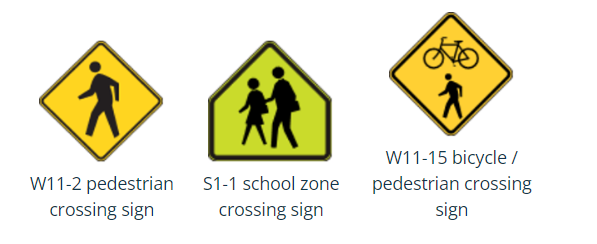MUTCD 11th Edition Update: Looking forward
If you have so much as a passing interest in traffic safety, you’ve no doubt come across the MUTCD, the Manual on Uniform Traffic Control Devices, often described as the bible of American road design. Issued by the Federal Highway Administration (FHWA), it essentially dictates what’s acceptable—and what isn’t—when it comes to things like signs, signals, markings, and other devices used to control, warn, and guide traffic.
Rectangular rapid flashing beacons (RRFBs) clearly fit into this category and have consistently been shown to increase driver awareness and pedestrian safety at unsignalized crossings. Finally, effective December 2023, RRFBs were officially recognized as approved enhancements for marked crosswalks at uncontrolled approaches in the 11th Edition of the MUTCD.
A bit of background
RRFBs initially received interim approval (IA-11) from the FHWA in 2008. Transportation departments could request to install them as a warning beacon to supplement a pedestrian (W11-2) or school (S1-1) warning sign located at or adjacent to a marked crosswalk.
For about 10 years, this is exactly what they did, adding much-needed conspicuity to crossings, particularly in areas with high pedestrian volumes or a history of pedestrian crashes. This ended in 2017 when the FHWA rescinded its approval due to the RRFB being a patented device (which the FHWA prohibits to avoid endorsing one particular product or manufacturer over another).
Reinstating the RRFB
For RRFBs to be used again and potentially someday included in the MUTCD, the patents needed to be disclaimed. Carmanah did this in 2018, purchasing the patents from their owner and returning them to the public domain. Any manufacturer can now produce RRFBs without worrying about licensing or patent infringement.
With this hurdle cleared, the FHWA issued its second interim approval (IA-21) of the RRFB in March 2018. Though still not included in the MUTCD, IA-21 once again authorized departments to install and utilize RRFBs—this time in an expanded range of scenarios, including at trail crossings and roundabouts.
Allowable uses under IA-21
IA-21 clarified that RRFBs are to be used for “pedestrian-actuated conspicuity enhancement,” rather than general “warning beacons” (as written in IA-11). They can be used to supplement the following post- and overhead-mounted signage:

RRFBs are NOT permitted at controlled crosswalks, meaning where traffic signals or regulatory signs (stop and yield) are present. A notable exception is roundabouts, where RRFBs may be used alongside these signs.
At locations where the sight distance is deemed inadequate (see here), IA-21 provides that an additional RRFB may be installed in advance of the crosswalk, along with a crossing warning sign with an “AHEAD” or distance plaque.
IA-21 also lays out additional specifications, including beacon dimensions, flash pattern, duration, mounting height, and accessibility features (which are optional). Details for all of these can be found in the the Notice of Interim Approval.
RRFBs made it!
The FHWA has finally updated the MUTCD, which was released in December 2023. The 11th Edition now includes RRFBs. This exciting change follows the December 2020 “proposed rule” for public comment, which includes adding RRFBs to the section on Enhanced Conspicuity for Standard Signs, as well as a new chapter with provisions for their application, design, and operation. We’re thrilled to see RRFBs officially included in this vital resource and can’t wait to see more cities rolling them out to keep pedestrians safe.
